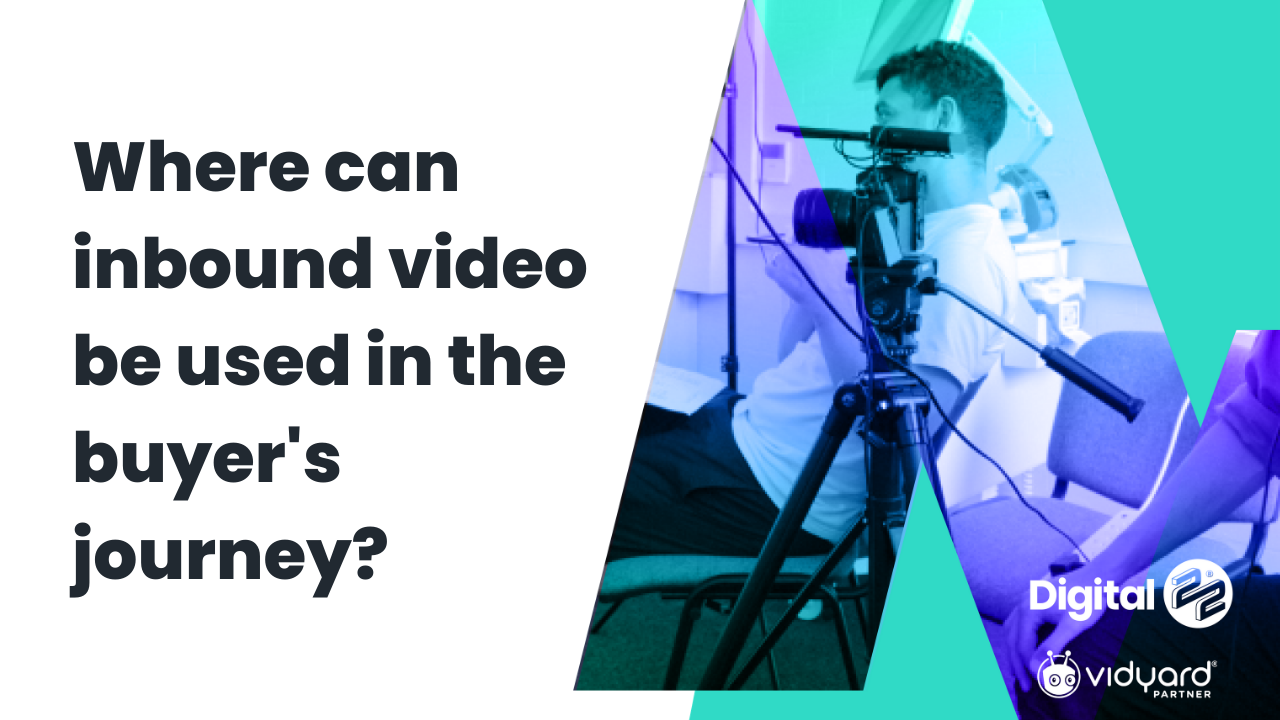Today’s buyers embark on what we can call a little journey. We don’t click on the first product...
We all know why a buyer’s persona is important - by creating personas, understanding their needs, ambitions and pain points, we can create relevant content they’ll be able to engage with. However, they need a pathway that can guide them from the initial point of discovering a problem or need to the final decision surrounding that need.
That’s what we in the marketing biz call a buyer’s journey.
Knowing what they consist of is a little different to actually making one. Luckily for you, I’m here to give you some guidance. Let’s explore the practical tips on how to make one.
Create the stages of a buyer’s journey.
Awareness. Consideration. Decision. If used well, these three stages of the buyer’s journey that can turn a prospect with a problem into a customer with a solution.
By using content marketing and our personas, we can pinpoint these issues and offer the first stage of content. Did you know 85% of consumers conduct online research before making a purchase? There’s a good chance your audience or personas fall into that category. Did you also know using statistics in a blog post improves an audience’s trust?
So, gotcha.
A lot of people ask whether there’s specific content for certain stages in the buyer’s journey. There are obviously types that suit a stage more. For instance, blogs really suit the Awareness stage and case studies suit the Decision stage - but these aren’t locked to certain stages. It’s all about what you’re writing and how you’re writing it, not the content form.
Remember, all buyer’s journeys are different and are specific to the personas you’ve created.
At this point, use your persona to determine the distribution methods of your content. For example, if you’re writing content for marketing execs, those distribution methods will probably revolve around social media and LinkedIn. In this case, a blog is a very suited content medium for those sites.
Your blog titles must be shaped around specific problems. If we run with the marketing exec example, these titles may be:
-
How do I increase website traffic?
-
How to decrease my homepage bounce rate?
It’s a good idea to look into the keywords and phrases your persona will relate to and probably want to find solutions for. If your persona is a marketing exec and you come up with the blog title ‘Top ten garden sheds for avid gardeners’, there could be a chance you’ve missed the mark. To be honest, you’ve definitely missed the mark.
Using your persona, you can determine a list of problems these people are likely to face. This becomes the basis of a fruitful content marketing campaign.
Understand your persona’s goals and challenges.
Goals and challenges. Ambitions and pain points. They’re two sides to the same coin and that coin is the overall needs of the persona. Let’s think of a sales director - what would be their goals? Quite possibly they’d want to see key stakeholders brought into the sales strategy or refine the sales process of their organisation.
Similarly, what are their challenges? A sales director may have high targets that seem unachievable and it may be hard to respond to the moves of a competitor in a timely manner.
Essentially, while we’re developing buyer’s journey content, we need to keep goals and pain points in mind. We also need to think about their market industry, the kind of technology they use, who they work with and where they find their resources.
The right type of content for the right need.
I mentioned previously that different types of content suit different types of need more than others, but this is highly dependant on what external factors we’re working with. This could be who your persona is, where they find their information and what content formats they respond to the best.
When planning your buyer’s journey, a great way to determine what content formats work best is a group discussion. You can bounce ideas back and forth and get a wide range of opinions that will help create the content offers that make up the backbone of your campaign.
Let’s return to the marketing exec example.
Obviously they’ll love a good blog on ‘X ways to increase organic traffic’, but what can you offer after this to nudge them down the buyer’s journey? It could be any one of the following:
-
Infographic
-
eBook
-
Pillar page
-
Whitepaper
It could even be more interactive pieces, such as a quiz or a video. The good thing about determining content is it helps to construct the latter parts of a campaign. If you’ve started with blogs and shorter form pieces, you can offer larger, more complex pieces down the line when the persona is looking for more information.
Remember, think of the narrative of your buyer’s journey. If there seems to be a gap between one stage and another, try and supple some form of content that can push a prospect forward.
If you’re curious about other forms of content and what goes best with each stage, check out our blog on the stages of the buyer’s journey.
Top things to remember about effective buyer’s journeys.
It’s worth remembering that those who prioritise content are 13 times more likely to see a positive ROI, which makes it even more important to create an effective buyer’s journey. Let’s go over some important actions you can take to ensure your creation is successful.
Put yourself in your persona’s shoes.
Imagine yourself as your persona - what will you do at each stage? To pinpoint this, find out where they find their information, their preferred medium and how they interact with it.
Conduct a content audit.
If you have existing content people interact with, brilliant. To do an audit, collate this content and figure out where in the buyer’s journey it belongs.
If it doesn’t seem to belong anywhere, can it be altered to fit? Can you take any ideas from the existing copy? Can you build upon it to create content for later stages in the buyer’s journey?
Remember to fill in the gaps.
When you have the first draft of your buyer’s journey, read it through as a group. The point of this is to identify any gaps that require attention. If it doesn’t make sense to go from one thing to another, can anything bridge the gap? Or, do you need to reposition the latter piece of content to link to something different?
Finally, think of how you can keep all of this information alive and adaptable. You’ll need some sort of template, where you can see each stage of the buyer’s journey and the subsequent content ideas, pain points and goals.
You’re probably wondering where you can find such a helpful document - look no further. We’ve created a buyer’s journey template you can use to chart your persona’s journey.
Download the buyer’s journey template today.
Our buyer’s journey template covers the entire lifecycle of your personas, with sections for listing goals and pain points, campaign content and download offers. Click on the link below to download.
If you’re looking for advice on how to use your template to create a buyer’s journey, don’t be afraid to get in touch - we’re here to help you get the most out of your marketing campaign.


